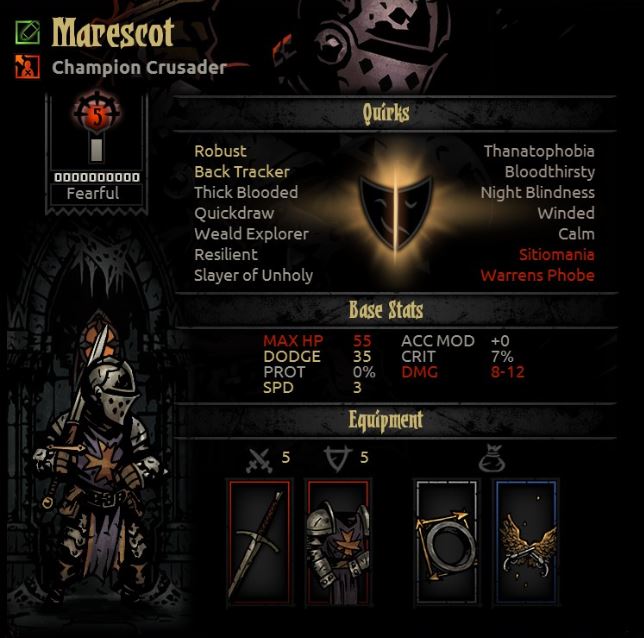A couple of quick notes: since reception has been good and my co-hosts have been supportive, this series may be the bulk of content on the blog for a while; the ideas haven’t been slowing down at all, and I feel like I may as well strike while the iron is hot. If it gets to the point of being tiresome, let me know, though. I definitely take listener/reader feedback very seriously. Likewise, if you have some specific aspect of the setting you’d like to hear about the design process behind sooner rather than later, let me know that, too!
Second, I’ve posted a list of the books (physical and digital) I’m using as reference material for this setting, but it’s not in this post. You can find it with the other posts in the series by clicking the link here. It’ll get updated as that becomes necessary, but as you can see, I have a pretty good-sized pile of material to work with, so I don’t see it growing too much. -Peter
In previous posts in this series, I’ve given a general overview and discussed on the moral universe of the setting (in significant detail) and now it’s time to shift gears a bit and talk about technology. This week’s post is going to focus on “functional” technology like weapons and vehicles. The next post in this series will focus on aesthetic technologies like architecture and fashion.
Since 5e doesn’t have its own vehicle rules, I’m planning to use the ones in Ultramodern 5 from Dias Ex Machina Games. I had originally planned on using rules from Hellscapes for modern tech, but the company that’s working on it has been the subject of some troubling controversy lately and it’s also not available yet – the aforementioned controversy has pushed the release date of the kickstarter rewards back a ways. I also think the modular nature of the Ultramodern 5 book is going to suit my purposes better anyway – there’s a lot in there that can easily be pulled out and used in a homebrew setting like this one with little or no modification necessary.
An Anachronistic Mess?
One of the things that’s going to become rapidly apparent as this post continues is that technology is all over the place, at least with respect to the real world. I am far more concerned with getting the feel of the setting right than I am about accurately modelling parallel technology development in a world that also has magic and mythical creatures running around. Plus, there’s also a long and noble tradition of picking and choosing different levels of technological advancement for setting flavor. (Fashion too, but that will probably be a different post.) Batman: the Animated series has big, clunky computers along with 1940s style cars, and Darkest Dungeon puts the Highwayman and Crusader in the same setting, though their respective inspirations are several centuries removed from each other in history! Standard D&D also does this a bit – rapiers show up next to less-advanced forms of sword and speaking of rapiers, they and a lot of the polearms existed alongside at least primitive gunpowder weapons like the arquebus, which are conspicuously absent from many D&D games. A lot of D&D settings also have tall ships, but instead of cannons, they use ballistae or magical weapons of some kind.
All of this is a very long way of saying: this setting isn’t Earth and sure isn’t historical so the tech will be all over the place.
Minimum Maximum
This admittedly-confusing term is what I’m using to describe the general technological baseline of the setting. It describes the lowest possible maximum level of technology that players can expect to find in the setting for anything that isn’t spelled out here. For example, the minimum maximum for textiles is 1975, which means that if players are trying to find a specific type of fabric, the GM should assume that at least everything that had been invented by 1975 exists in the setting. (How available it is to PCs is another matter.) The general minimum maximum is late industrial revolution (1900 or so) for adventuring equipment and about 1965 for normal consumer goods.
Firearms
Even though guns aren’t the most advanced piece of tech in the setting, they’re one of the things that probably is going to feel the least fantastical to a lot of folks, so let me get those out of the way first. Firearms technology in the setting sits somewhere around 1910 or so. The world has cased ammunition, bolt-action rifles, revolvers, and pump-action shotguns (and preceding technologies like lever-action rifles). It also has heavy, liquid-cooled machine guns and some early heavy, air-cooled designs like the M2 Browning .50 caliber heavy machine gun. What it explicitly does not have is anything at all that is both man-portable and automatic. Assault rifles and submachineguns do not exist in the setting and neither, for that matter, do even primitive semi-automatic rifles like the M1 Garand or early semi-auto pistol designs like the 1911. The same is true for shoulder-fired missiles. Massive creatures like ogres or golems may be able to lug around a machine gun or cannon that would normally be mounted on a vehicle or tripod, but average line troops (and adventurers!) will have to make do with guns that fire one shot at a time and then need to be manually operated in some way to get the next round into the chamber. WWI-style artillery exists, including railway and naval artillery that can lob shells incredible distances, but let’s be honest: that’s mostly plot-device stuff.
As far as weapon accessories go, scopes, bipods, slings, and bayonets are available, but folding stocks, extended magazines, holographic sights, under-barrel secondary weapons (like shotguns and grenade launchers), and suppressors or silencers of any sort are not available.
One very important consideration: any sort of spell, class, or archetype that does something special to arrows or crossbow bolts can do it to bullets too, provided that the bullet (or its casing) can be touched just prior to firing. This means that any spells or class abilities that would normally create magic arrows of some kind can also be used with revolvers and bolt-action rifles. Interestingly, it also means those abilities do not work with primitive, muzzle-loading gunpowder weapons unless the effect is put on a piece of ammunition which is then saved until needed.
A lot of the roles filled by heavier man-portable weapons on a modern battlefield are instead filled by spellcasters. Who needs a frag grenade when you have spells like Fireball or Lightning Bolt? The setting has no suitable nuclear materials available for research, much less power or weapons. (I really just wanted to leave the entire question of nuclear weapons off the table.)
In terms of the actual 5e rules, this means that the Pistol, Musket, Revolver, Hunting Rifle, and Shotgun from pg 267-268 of the DMG are available, but none of the other firearms are. Gunpowder and Dynamite are the available explosives.
Other Weapons and Armor
Despite the availability of advanced gunpowder weapons, the full spectrum of melee weapons is still very much in use. Ancient martial traditions still teach the use of “ancient” weapons and there’s a lot of cultural weight behind using them. And also: pure rule of cool. This is a heavy metal setting, after all. Massive swords and axes are very much in-flavor! Bows and crossbows also get a lot of use by scouting units; bows and crossbows are still plenty deadly and they’re quiet. They require a lot more skill to use effectively than a gun, but highly-trained scouting and recon units and long-lived races like elves will put in the time.
Armor still follows ancient designs somewhat, and a combination of better underlay materials and magic keeps it relevant against bullets. In terms of rules, this means “no special armor considerations.” Just keep using armor as presented in the PHB.
Transportation
Land vehicles are markedly more advanced than firearms, comparable to about 1970s technology. Cars are large, made of steel, loud, fast, and not terribly fuel-efficient. They’re also relatively-simple, mechanically-speaking. Features like fuel injection, anti-lock breaks, air bags, traction control, and so on don’t exist yet (seat belts and windshield wipers do, though). Emissions are definitely not up to 21st century standards (which is a feature, not a bug in the context of this setting; vehicular pollution definitely is in line with the feel of the Grim Cities). Specialized designs like 4×4 vehicles and a variety of trucks from pickups all the way to semis exist.
Aircraft are more primitive than land vehicles, but still more advanced than firearms; the jet engine hasn’t been invented, and all aircraft are fixed-wing designs (so no helicopters). Rockets are primitive, unguided designs. Nobody has put satellites into space yet, let alone people. Military vehicles are a bit more varied. Armor is about as durable as WWII standards, but tank design is definitely stuck in a WWI mold. Jeeps and WWII style fighter and bomber aircraft exist.
Railway transportation is in the transitional period between steam and diesel and both are seen. Diesel tends to be closer to the the cities and steam is more prevalent out in more remote areas.
Naval transportation is mostly engine-driven, but more than one ship has found out the hard way that trivial factors like wind speed and direction will not keep the ghostly tall ship full of undead from catching up with you and boarding you anyway.
Paved roads, railway lines and canal systems all exist, but their quality and safety vary wildly.
Information and Communication
Communication technology is fairly advanced, with CB radios and landline telephones available. However, it degrades somewhat as you travel out into the country. Information technology is decidedly more primitive. There’s nothing resembling a modern computer anywhere in the setting, though room-sized monstrosities may exist. Engineering is still done on slide rules. Television and broadcast radio exist, but TV is black-and-white only and is limited to relatively small CRT screens. Payphones cost 1 SP/minute to use where they’re available. And of course musical instruments are up to 1985 standards or so. If the setting is based in part on heavy metal, it’s kind of a no-brainer that the tools to make it should exist in the setting!
Medicine
Like weapons, medicine also lags in a world with magic. It is around 1960s levels, with anesthesia, surgery, sterilization, antibiotics, and blood transfusions, but a lot of more serious ailments are treated with magic. Cancer is highly-resistant to ordinary healing magic, but high-level spells like Heal can still get rid of it. There’s a fair amount of “mad science” around the setting, and it’s intertwined with magic, so creatures the likes of which you’d expect people with name like “Moreau,” “Ludevic,” and “Frankenstein” to put into the setting definitely exist. Primitive bionics (heavily-dependent on magic) in particular can come from these mad science applications.
Materials
Plastics are in their early days. You’ll see plastic cases for radios and so on sometimes, but most are still made of metal. Plastic buttons and keys are definitely becoming more common on things like typewriters and radios, however. Bottles, jars, and windows are all still made of glass. The plastics you need for nylon clothing, polycarbonate windows, hook-and-loop fabric and so on haven’t been invented. The setting has the metal alloys you’d expect; brass, bronze, and stainless steel all exist, for example.
Conclusion
That’s it for this week’s blog post. As mentioned previously, next time I’ll dig into the way technology makes the world look, rather than just what it does. As always, I’m definitely interested to hear any thoughts you have. Previous listener/reader feedback has shaped the design of this setting already!
Playlist:
Burn the Witch by Angel Nation – this music video about excessive screen use does a pretty good job of showing one of the reasons why I didn’t use advanced tech in the setting. It tends to be dominating in ways that really alter the setting at the gaming table.
Devour by Shinedown – a fantastic peek at the feel of the Grim Cities and their militaristic, industrial oppression.




